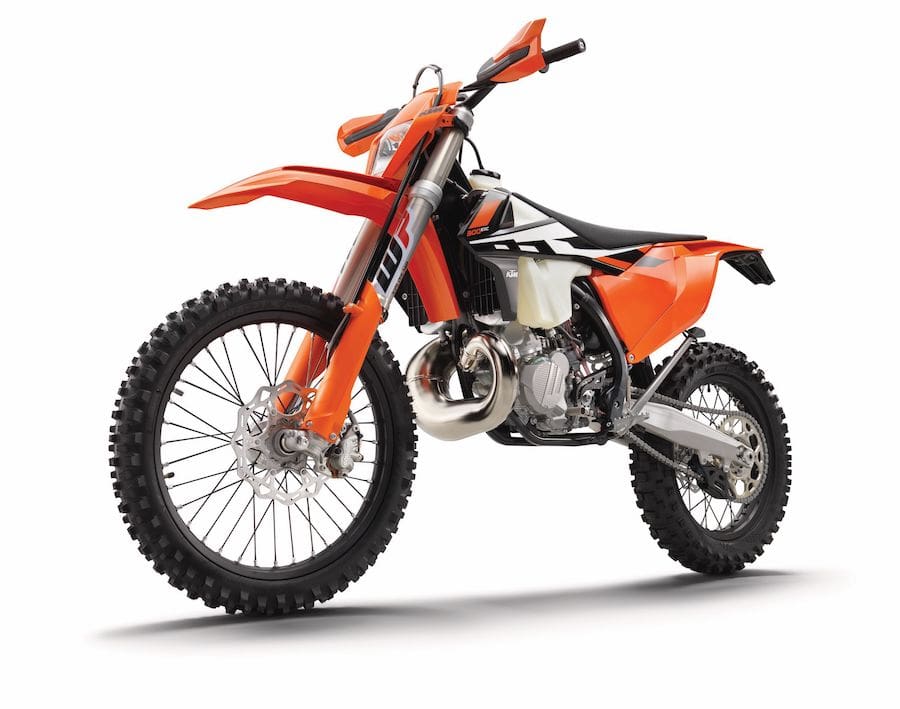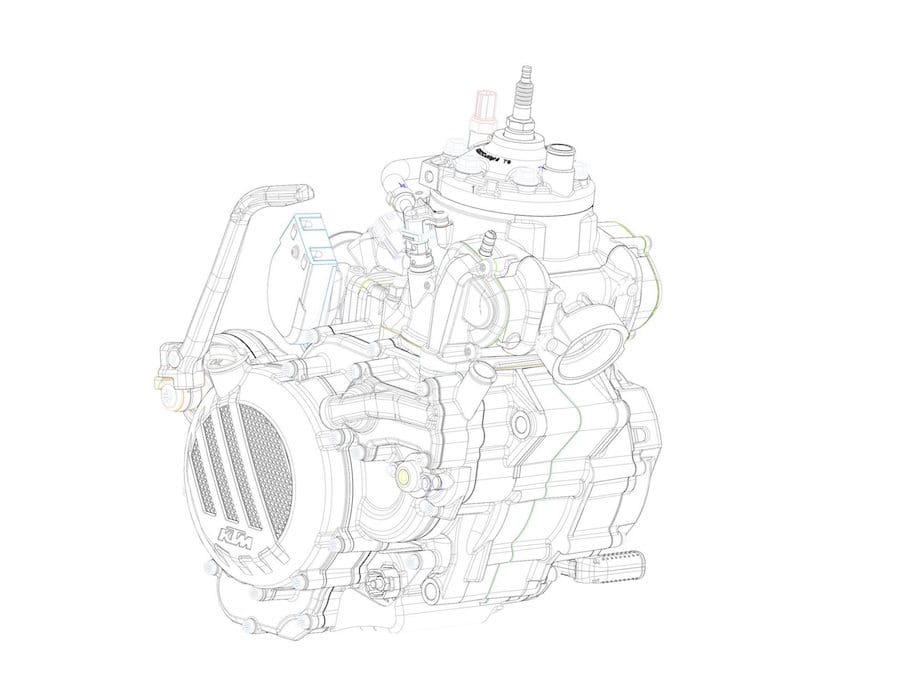It’s no secret KTM has been hard at work on an effective and sustainable fuel-injection system for its large and successful range of off-road two-stroke motorcycles. Between patents and spy images, we’ve been aware that the firm has been tinkering away behind closed doors at its Mattighofen R&D facility in Austria for a number of years.
It’s certainly doable, as proven in the PWC and marine segment where efficient fuel-injected two-stroke engines using direct injection are produced by the likes of Evinrude and BRP’s Ski-Doo.
For dirtbikes, where the attraction of a two-stroke is that it is lightweight, compact and mechanically rather simple, developing a fuel-injection system that ticks all these boxes has its challenges.
Now, when emission controls have never been stricter, KTM has announced that its 2018 EXC enduro range will be the first models to reap the benefits of what it’s calling its Transfer Port Injection technology.
Details are scarce – the fanfare is planned for the range’s world launch, slated for May this year – but from what the company has said, gone will be the days of having to pre-mix fuel and changing jets, while the fuel consumption, and therefore emissions, will be significantly reduced.
“This is an incredibly exciting development for KTM,” said the company’s product manager, Joachim Sauer. “We have been developing two-stroke fuel injection for some time and our goal was to create competitive motorcycles with all the benefits of fuel injection, while fitting into our ready-to-race mantra.”
“There has been extensive testing and considerations for our R&D team to take into account during this process, so we are very motivated by world-first in technology, as we take a major step forward in this segment.”
KTM not alone
Despite KTM’s headline-grabbing claims, it’s not the first to dabble in fuel injection for two-stroke machinery in the motorcycle segment.
In 2015 Honda filed patent applications for a fuel-injected two-stroke. It sticks in our memory because it was the very brand that controversially announced in 2007 that it would kill off all future development of two-strokes for good.
While those patents didn’t specifically use the word motorcycle (okay, they actually said “general purpose engine”), the point remains that the largest motorcycle manufacturer in the world is ready to pounce if and when the market demands it.













